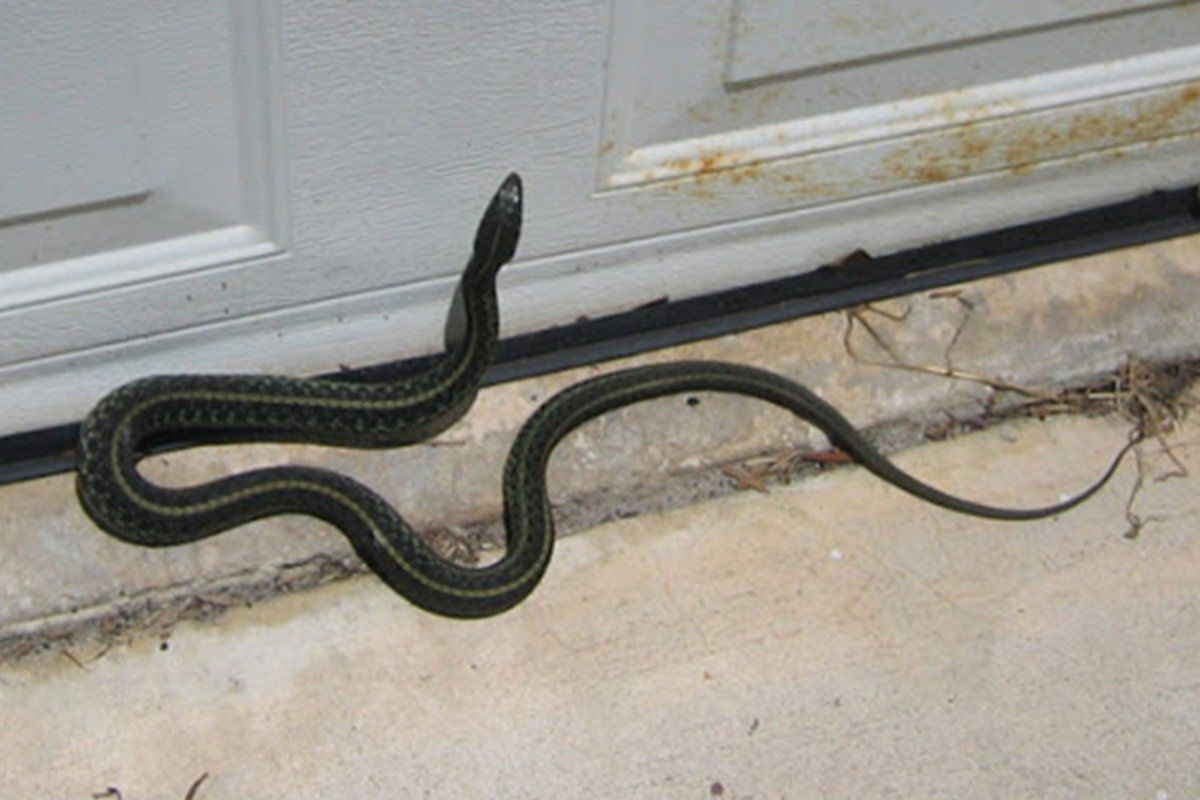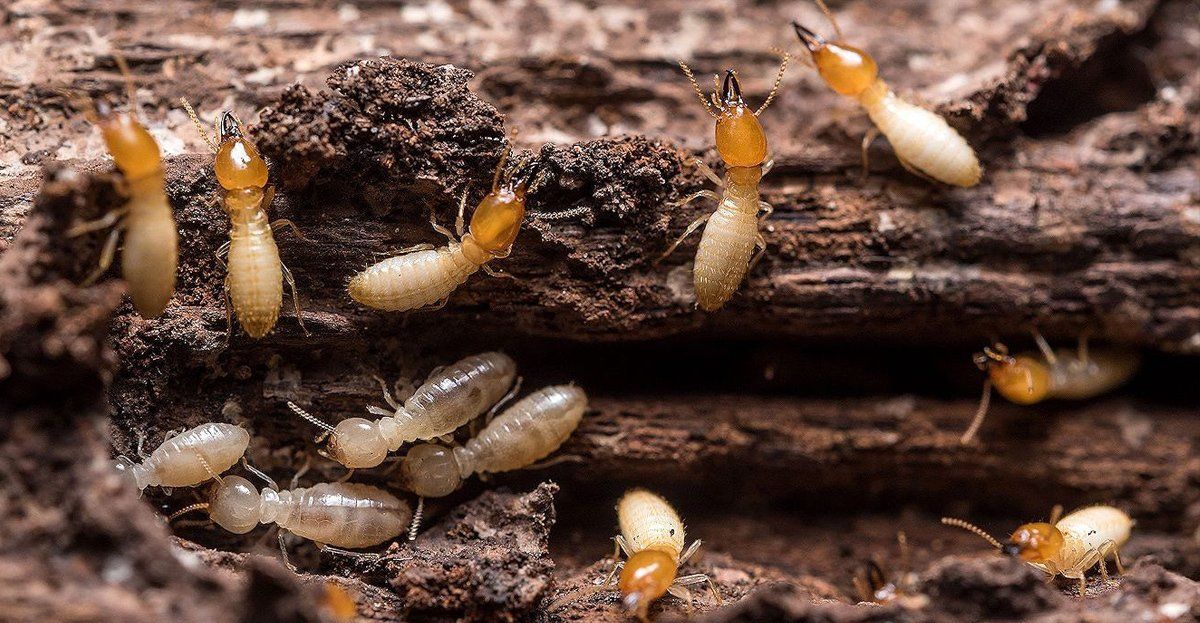Blog Layout
Tickborne Diseases and Lyme Disease Are on the Rise
poppy johnson • November 3, 2020
Know what to do to stay safe from ticks.
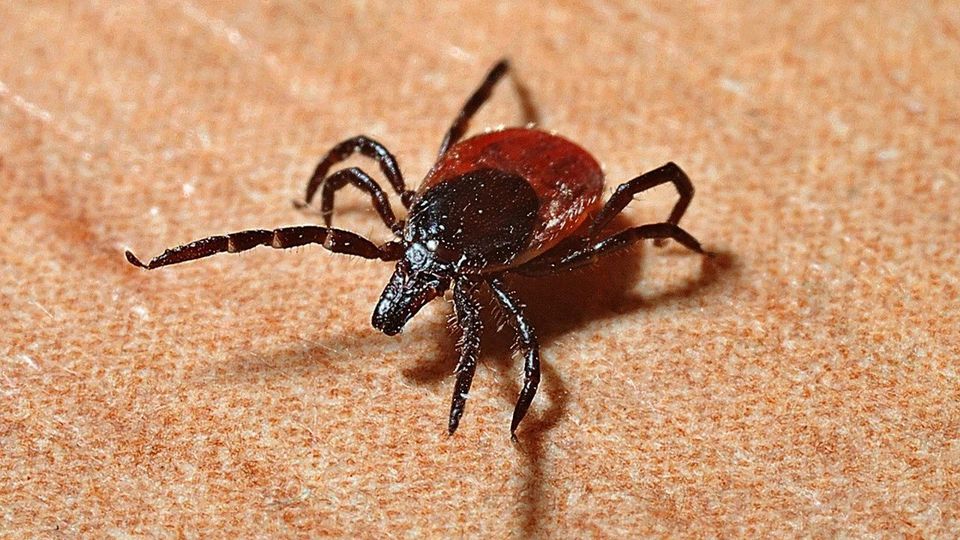
Tickborne disease
are infecting more and more people in this country. Being bitten by a tick will spread disease-carrying germs and bacteria passed from the tick to the host (a person bitten by the tick). Recently, there have been novel tick species that have been found in the US. For that reason, it is more important now than ever before for everyone to be more responsible to help prevent tick bites and exposure to ticks
while working and enjoying the great outdoors.
In the past twenty years, seven new tickborne germs that can cause illnesses have been identified in the United States. These new diseases include:
• Borrelia mayonii
• Borrelia miyamotoi
• Ehrlichia ewingii
• Ehrlichia muris eauclarensis
• Heartland virus
• Rickettsia parleri
• Rickettsia species 364D
New testing that uses DNA are able to isolate and identify even more new tick germs in the US population. The Centers for Disease Control and Prevention has a program to find bacteria and germs in people with suspected tickborne diseases, and uses Advanced Molecular Detection (AMD) to identify these illnesses in humans. In the year 2017, the CDC noted state and local reporting of ticks from US health departments recorded a record number of tickborne diseases.
• Lyme disease
• Anaplasmosis/ehrlichiosis
• Spotted fever rickettsiosis
• Rocky Mountain spotted fever
• Babesiosis
• Tularema
• Powassan virus disease
The total number of tickborne illnesses in 2016 were 48,6100, but in 2017 there were 59,349 cases reported. This number does not include all of the cases that went unreported to local and state agencies for tick bites. These models of increased tick bites do show that tickborne illnesses have been on the rise, as in the case of Lyme disease which has tripled in incidence reports since the late 1990s.
The geographical area where ticks live has been expanding across the country, as a result of deer and other animals that the ticks piggyback on to move easily from one region to another. An example of a mobile tick is the lone star tick. It can transport pathogens causing:
• Ehrlichiosis
• Tularemia
• Heartland virus disease
The Lonestar tick started in the Southwestern US areas, but now is also seen in northern and mid-western states as well. As deer and animal populations migrate, so do ticks. The northern and midwestern states now have many more different types of ticks, and Lyme disease risks have increased over 300% in these regions for exposure to ticks.
Recently, a new tick species called Haemaphysalis longicomis (the Asian long horned tick) has come to the United States. It is the first time that this tick has been identified in this country. We are still researching this new tick that has made people in other countries severely ill, but there are no problems with this species reported on our shores as yet.
Ticks can live up to 2-3 years, and whether your region will experience an “up-tick” in tick populations will depend on many factors, such as:
• Rainfall in the region
• Overall relative humidity in the seasons
• Temperatures in the region
• Number of mice, deer, animals available for tick blood meals in the forests and fields
It is important to remember that not all ticks spread the same diseases, but the likelihood of any tick spreading a disease to humans will always remain high. For this reason, avoid hiking or walking in areas with high or tall grass, leaf litter, or new forest growth to avoid encounters with ticks. Also, use permethrin to treat all clothing before going into the woods were there may be ticks. Treat and check all pets for ticks when returning home from hikes, and shower or bathe immediately after coming indoors to wash off any ticks before they get the chance to use you as a host for their blood meal. Always perform a full body check for ticks after walking or enjoying time outdoors in the woods.
If you need your property treated for ticks, we are here and can come to you now to provide that service for you. We are able to come to you right away to treat for ticks and other pests on your residential or commercial property. Just call Overson Pest Control, in Mesa, servicing Mesa and the surrounding areas. We are your #1 resource for pest control in Mesa, Arizona. Just call us now for an experienced exterminator in Mesa, and the surrounding areas.
In the past twenty years, seven new tickborne germs that can cause illnesses have been identified in the United States. These new diseases include:
• Borrelia mayonii
• Borrelia miyamotoi
• Ehrlichia ewingii
• Ehrlichia muris eauclarensis
• Heartland virus
• Rickettsia parleri
• Rickettsia species 364D
New testing that uses DNA are able to isolate and identify even more new tick germs in the US population. The Centers for Disease Control and Prevention has a program to find bacteria and germs in people with suspected tickborne diseases, and uses Advanced Molecular Detection (AMD) to identify these illnesses in humans. In the year 2017, the CDC noted state and local reporting of ticks from US health departments recorded a record number of tickborne diseases.
The tickborne illnesses reported include high numbers of:
• Anaplasmosis/ehrlichiosis
• Spotted fever rickettsiosis
• Rocky Mountain spotted fever
• Babesiosis
• Tularema
• Powassan virus disease
The total number of tickborne illnesses in 2016 were 48,6100, but in 2017 there were 59,349 cases reported. This number does not include all of the cases that went unreported to local and state agencies for tick bites. These models of increased tick bites do show that tickborne illnesses have been on the rise, as in the case of Lyme disease which has tripled in incidence reports since the late 1990s.
The geographical area where ticks live has been expanding across the country, as a result of deer and other animals that the ticks piggyback on to move easily from one region to another. An example of a mobile tick is the lone star tick. It can transport pathogens causing:
• Ehrlichiosis
• Tularemia
• Heartland virus disease
The Lonestar tick started in the Southwestern US areas, but now is also seen in northern and mid-western states as well. As deer and animal populations migrate, so do ticks. The northern and midwestern states now have many more different types of ticks, and Lyme disease risks have increased over 300% in these regions for exposure to ticks.
Recently, a new tick species called Haemaphysalis longicomis (the Asian long horned tick) has come to the United States. It is the first time that this tick has been identified in this country. We are still researching this new tick that has made people in other countries severely ill, but there are no problems with this species reported on our shores as yet.
Ticks can live up to 2-3 years, and whether your region will experience an “up-tick” in tick populations will depend on many factors, such as:
• Rainfall in the region
• Overall relative humidity in the seasons
• Temperatures in the region
• Number of mice, deer, animals available for tick blood meals in the forests and fields
It is important to remember that not all ticks spread the same diseases, but the likelihood of any tick spreading a disease to humans will always remain high. For this reason, avoid hiking or walking in areas with high or tall grass, leaf litter, or new forest growth to avoid encounters with ticks. Also, use permethrin to treat all clothing before going into the woods were there may be ticks. Treat and check all pets for ticks when returning home from hikes, and shower or bathe immediately after coming indoors to wash off any ticks before they get the chance to use you as a host for their blood meal. Always perform a full body check for ticks after walking or enjoying time outdoors in the woods.
If you need your property treated for ticks, we are here and can come to you now to provide that service for you. We are able to come to you right away to treat for ticks and other pests on your residential or commercial property. Just call Overson Pest Control, in Mesa, servicing Mesa and the surrounding areas. We are your #1 resource for pest control in Mesa, Arizona. Just call us now for an experienced exterminator in Mesa, and the surrounding areas.

By poppy johnson
•
October 8, 2020
Whenever you need pest control or exterminator service in the Mesa, AZ area, just give us a call! We are here for you and can help you protect your warehouse inventory right now, just call today! We will come to you right away, and are available 24/7 at the first sign of a pest, pick up the phone for pest control service in the Mesa and surrounding areas.
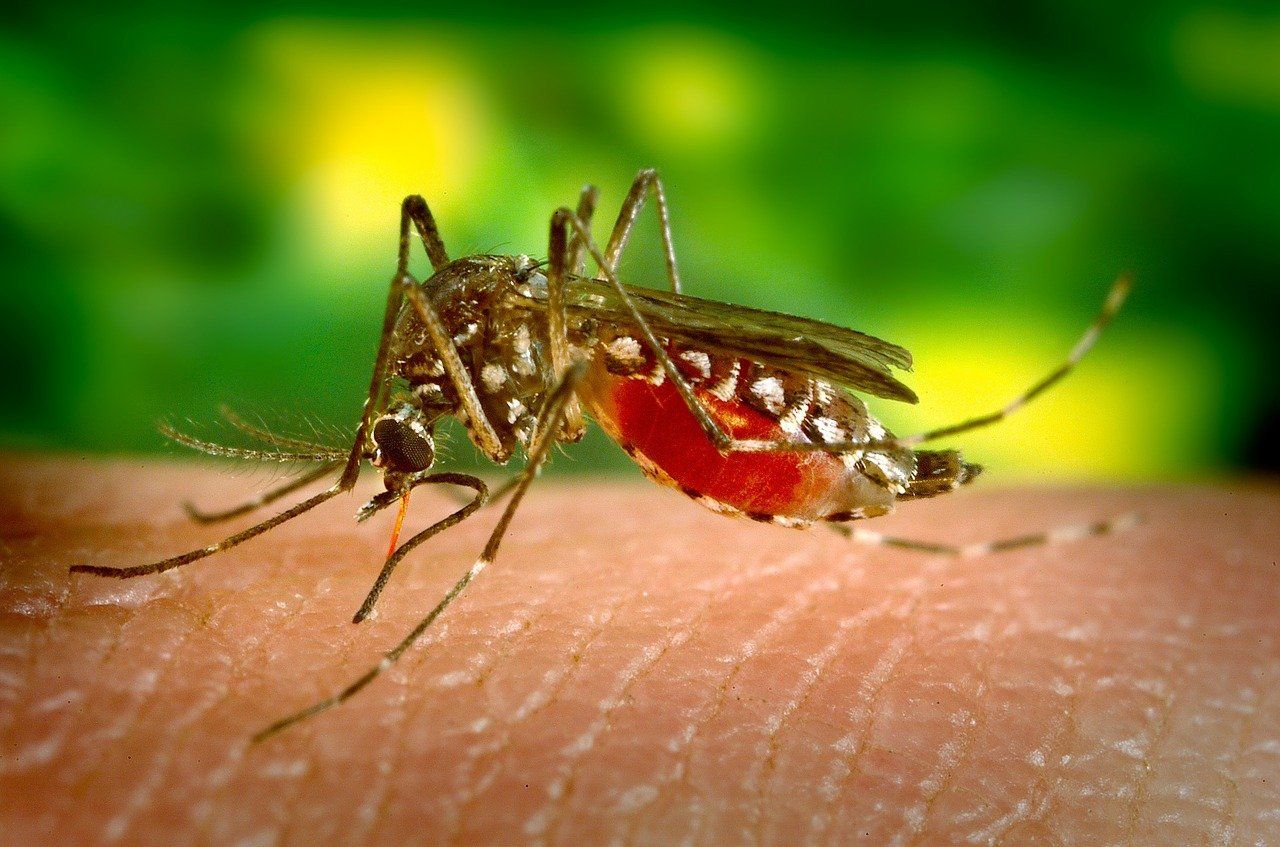
By poppy johnson
•
September 4, 2020
Mosquitoes are more than just a summertime nuisance, it is true that they are capable of carrying diseases that affect humans and can cause serious illnesses. Mosquitoes are part of the family Culicidae (order Diptera) and go through four stages in their life cycle: egg, larva, pupa and adult. Even though the survival of the mosquitoes at the younger ages is only around 5% of the brood, that is still a lot of mosquitoes that will make to adulthood! The egg stage of a mosquito shows that the eggs are white and then darken in a day or so. The eggs on closer look are oblong and incubate at different rates depending on the species. When the eggs are left to hatch in water, they do so within one to four days if the water temperature accommodates them. but when mosquito eggs are laid in wet or moist soil instead, the larvae can sleep for a year or more , as they wait for the field to be flooded to support their growth. Yes, that’s right, mosquitoes can “hibernate” in a way, and if they are not eradicated from your property, the colonies and populations of mosquitoes to bite you next year will grow exponentially. During the larvae stage (called wigglers), all mosquitoes live in water. Their abdomen holds a siphon tube that acts as a snorkeling gear for them to allow them to breathe air above the water’s surface. Most of the larvae eat anything small that floats their way, even cannibalizing other mosquito larvae, as they grow to the next stage of development. At the mosquito’s pupae stage (called tumblers), the mosquitoes grow two respiratory horn-like features to help them breathe even better underwater. At this stage, they go into a fast, and they don’t eat much at all. In the final stage of a mosquito’s life cycle, the mosquito matures into an adult. Here they are able to fly and find a meal. Considering that they haven’t eaten at all during the prior stage of growth, it sure explains why adult mosquitoes are starving and always so hungry! The female mosquitoes feast on animal blood and plant nectar, while the males usually eat nectar and plant secretions exclusively. Once females take on a blood meal (from your arms and legs in the summer sun), they’ll develop eggs a few days later and the mosquito cycle starts all over again. When you need help getting rid of mosquitoes on your property, just give us a call. We are your premier pest control service in the Mesa area. Call us for help with pest extermination service in the Mesa area today! We are here for you and are ready to rid your home or business of any pests that you encounter. Call now. References Entnemdept.u.fl.edu/fasulo/vector/chap03.pdf
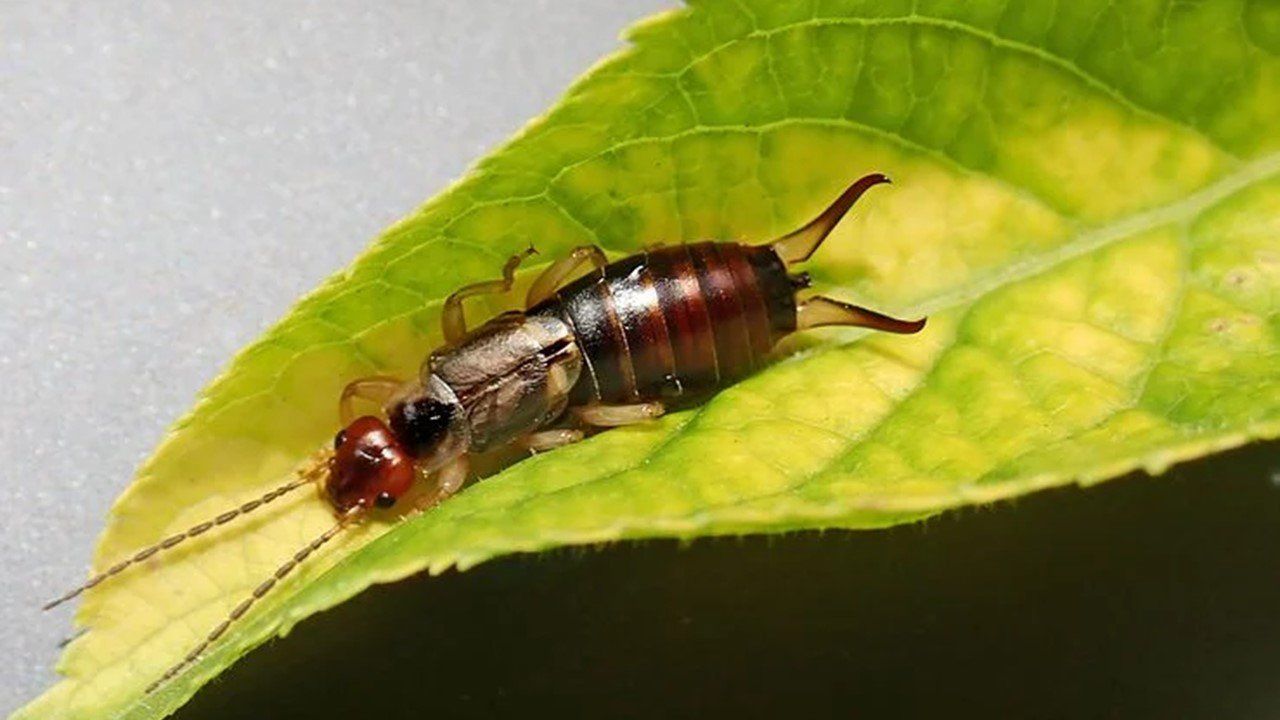
By poppy johnson
•
August 16, 2020
The myth about earwigs being able to crawl in our ears and feed on the brains of sleeping people is just that – a myth. It is a silly superstition that gave this bug its name, and you can be sure earwigs have no intention to go into our ears for any reason. The truth is that the earwig is an insect that does like to live in houses, but it is usually harmless to humans. The earwig is around 5 to 25 millimeters in length, has two antenna, six legs, three body sections and pincers like a crab at the end of its abdomen. They are nocturnal, live in colonies and prefer to hide out and stay in cool wet areas around the home that hold moisture such as near brush, under bushes or burrowed in mulch. Female earwigs can make up to 60 eggs a season and prefer to burrow into the soil around a house a few inches under the ground, making them hard to find. They winter over in the soil and will come out strong in the spring. Knowing this, it is better to keep your yard clear and free from wet leaf piles, grass clippings and check in the areas around wet mulch if you suspect an earwig infestation. Once the earwigs get into the garden, they can cause a nuisance by eating vegetation outdoors. Indoors they are a pest that can hide in walls, foundation cracks, pipes and in window frames. The way to help prevent an infestation of earwigs is to rid the outside areas of the property of spaces where earwigs can hide. This includes repairing all rotten wood around the home, and turning off any lighting in and around flower beds and low shrubbery near the home. You may want to consider getting ornamental stones or gravel in areas along stone walls or near dark corners of the property to help prevent earwing colonies from forming in these areas of the yard. Also, it will be important to make sure that any downspouts are directed away from the foundation, and keep all gutters clean to prevent a buildup of water near the ground areas around the home. If you suspect that you have earwigs, give us a call right away. We are able to eradicate any earwig colony and prevent an infestation that will look to winter over in areas in the home. We are hear for you 24/7, just give us a call today!
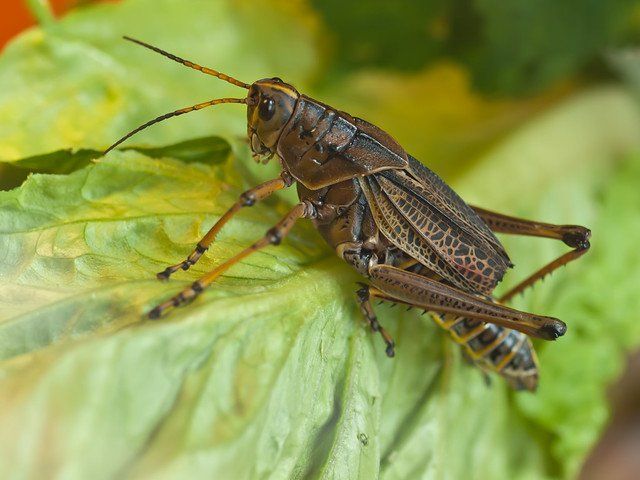
By poppy johnson
•
July 3, 2020
Some people hear crickets on a warm summer’s evening, and immediately think of grasshoppers. Others believe that they are basically the same bug. Well, nothing is further from the truth, as there are some major differences between crickets and grasshoppers, and here is the reason why. Crickets typically only come out at night , while grasshoppers are seen mostly during the daytime hours. Crickets are omnivores, while grasshoppers are strictly plant eaters. The antennae are different too, with crickets sporting a long antennae, while grasshoppers have short ones. And the most derivative difference of all – crickets rub their forewings together to make their telltale chirping noise, while grasshoppers rub their hind legs to their forewing to call their mates. There are over 900 different species of crickets (Gryllidae) that are found naturally to live quite comfortably on the North and South American continents. Historically, crickets were known as a sign of good luck, and in some cultures are even kept as pets in small handmade bamboo stick cages. Crickets are part of the general food chain, and are eaten by birds, bears, spiders and even are a delicacy in Southeastern culture as a favored deep-fried snack. The body of a cricket is round, with a round head, long antennae and super strong hind legs. They can be a range of colors from green, to olive or brown. Crickets come to residential properties in search of food, light or shelter from the elements. Crickets like to hide out in gardens or tall grassy areas around the home. At the end of the summer season, they can come indoors as the fall season days drop outdoor temperatures lower. They are happy to live in the home rent free by hiding out in dark corners or behind furniture if they can get away with it. In general, crickets don’t bite or sting humans, but they do have an irritating chirp that is rather annoying once they have found their way indoors and remain hidden from sight. They eat other small plants and insects (meat eaters), and have even been known to eat other crickets as well if need be (cannibals). Here’s a fun fact about crickets: The male crickets (never the females) really do chirp louder when it is warmer in temperature outside. A scientist invented a formula to determine the cricket chirps per minute on a chirp scale called Dolbear’s Law, that measures chirps at 50 degrees F (which is 40 chirps per minute/4) or at 40 degrees F (chirping measured over 15 seconds). This might be fun to measure when you are outside enjoying a cool summer’s evening stroll, it really works! But it is not so fun when you have a noticeable infestation of crickets in or around your home. If that is the case, it is time to call in the professionals to remediate this problem once and for all. Crickets will lay their eggs in the fall, winter over in a home or garden, and hatch their young ones in the springtime. Once hatched, the nymphs molt and grow quickly while shedding their bodies as they mature. Another fact that is not so fun, is that during one lifetime, one female cricket can lay up to 400 eggs. If you have a few crickets in a crawlspace, that will be a lot of eggs that can potentially hatch over time. If there were a dozen crickets, just imagine the number of eggs that could potentially hatch in an infestation. For this reason, it is critical that any time that you see large numbers of crickets in or around your home, you will need to call for pest control in Mesa, for getting ahead of this issue right away. There is not time to lose whenever you find an infestation of crickets, and we are here to help you get rid of them right away. Call us 24/7 whenever you need us to rid your property of a cricket infestation today.
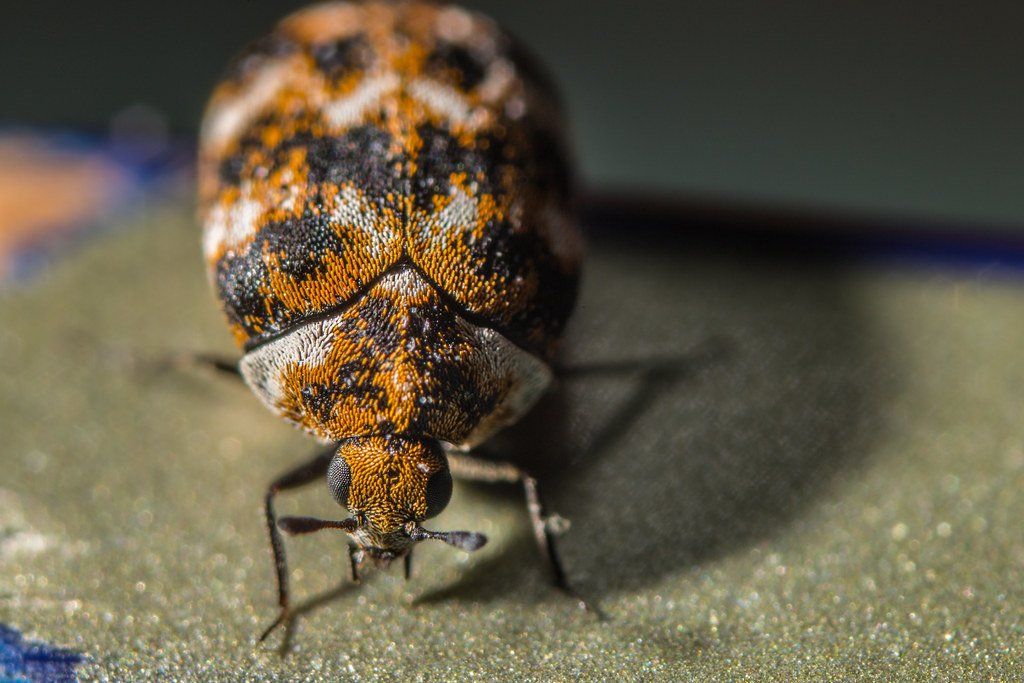
By poppy johnson
•
June 12, 2020
Carpet beetles (Dermestid Beetles) are insects commonly found in Colorado homes and office environments. Carpet beetles are used to living in close contact with humans, and feed quite happily on: • Dead insects • Pet hairs • Lint • Woven fibers • Pet fur • Pet feathers • Clothing • Wool items • Cloth furniture If carpets are made of synthetic non-wool fibers, the carpet beetles will not be a threat. But the carpet beetle can feed on more than just carpets. It can easily be found in food pantries, in the kitchen eating crumbs from the floor, behind the walls in a building, and wherever food is prepared in an office. These pests can be managed first by removing their food resources, treating them with heat or cold to reduce the infestation, and to search the outside for colonies or larvae that have been feeding outside the property. The carpet beetle has young that hatch from an egg 1-2 weeks after the egg is laid. The larvae are reddish brown or lighter brown in color, with a fuzzy outer body. The young shed their skin as they mature, and these discarded exoskeleton shells are a sure sign that carpet beetles are present in the home or office environment. The larvae can initially take nearly a year to develop eggs before they are hatched, and can have a gestation period of up to 2 years. Generally speaking, the carpet beetles found in commercial buildings are as a result of a wild population from a bird’s nest or animal den that was cultivated outside of the building where they now are found. For example, adult beetles can feed on plant pollen and flowers such as spirea and viburnum as well. The usual household infestation of carpet beetles in Colorado can begin when adult beetles fly into a home, find sustainable food resources, and stay to raise young for the next generation. Carpet beetles can also hitch a ride on used furniture therefore, it is important to inspect any used furniture before bringing it home or to the office space for pests and carpet beetles. If you see discarded carpet beetle shells in your residential or commercial property, there is a good chance that you have a carpet beetle infestation. Just give us a call at the first sign of carpet beetles – we know how to get the infestation under control and “outta there” without any delay. Call now, we are on call to come to you whenever you need us. Call today! References Dermestid Beetles (nd). Colorado State University Extension. Colostate.edu.
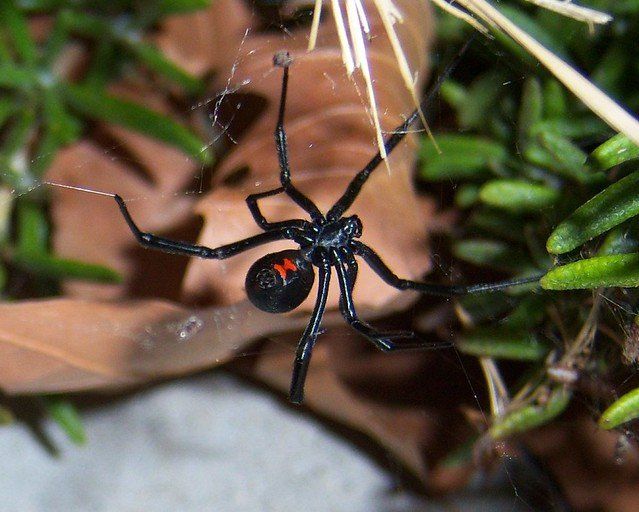
By poppy johnson
•
May 5, 2020
An amazing fact that is true is that black widow spiders have the uncanny ability to create and spin webs that are as strong as steel! It seems almost impossible that a black widow spider web, as messily as they are constructed could have an unprecedented amount of tensile strength, but there you have it – it’s a fact. The science community marvels at the amino acids that are naturally present in spider silk proteins which produce spider used fibers and webs. In general, scientific research in the past has determined that spider webs are as strong as they are because of small specialized nanoscale molecules which are the reason for this super human strength exhibited by some spiders with some webs. Engineers reviewing the mechanics of the black widow spiders, notice that these extra durable webs and spider silks are spin from the spider’s abdomen with specific proteins. Likewise, the material is continuing to be researched to determine if it can be duplicated for use by humans. The uses will span many different applications, such as for military textiles, applications in building and construction industries for bridge cables, and with sustainability applications as well. There is even a nod to whether these types of materials if created using the same spider technology, could be created able to be useful and help with first responders when responding to emergencies requiring strong materials for rescues and the saving of lives in the future. Black widows have cornered the market on strength when it comes to their webs, and here is why. The result is that the protein used to create the web is the ticket to understanding how it is earth defyingly strong. This black widow silk protein, as the code is definitely cracked, is actually considered to be as durable as the Kevlar material used in the bulletproof vests of our law enforcement agencies. Most spider webs that we see outside are spun and created in an orb, or a complex circular pattern that winds around and around with regularity and accurate distance from one level to the next. This web pattern is not so prominent with the black widow spider web. At first glance, the black widow web looks haphazard and unkempt, with no rhyme or reason, but that would be an inaccurate portrayal of that spider’s efforts to make webs for sure. The black widow spider web has support scaffolding, silk anchor lines and a definite plan to catch prey. By combining the protein with the web design, the black widow has an effective plan to find, detain and capture prey, and makes a durable web that is not going anywhere anytime soon. Now knowing that black widow spiders set up shop in hiding places around your home or office to stay put for a while. This makes it more and more pressing that you call in the reinforcements to get rid of black widow spiders once and for all. We are able to come to you whenever you call us to remove any black widow spiders, and we will remove the threat that they will come back to your residential or commercial property. Black widow spider bites are usually rare, but it is necessary to get rid of them professionally, since as you can see, they set up shop to stay on the premises for a long time. These spiders are fully capable to build a strong and durable web. Don’t take any chances, give us a call right now, and we will rid your home or office of black widow spiders today. References 1. Black widow spins super silk (1996). Sciencemag.org . Retrieved from https://www.sciencemag.org/news/1996/12/black-widows-spin-super-silk. 2. Mystery of how black widow spiders create steel-strength silk webs further unravelled (2018). Sciencedaily.co m. Retrieved from https://www.sciencedaily.com/releases/2018/10/181022150938.htm.
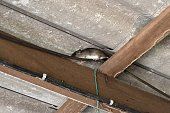
By poppy johnson
•
April 2, 2020
Roof rats (Rattus rattus) are a rat species native to Arizona and have become a threat and health nuisance for the last few decades, and possibly even before that time. These rats can live on roofs in the Southwest and are also known to carry a number of diseases that can affect pets or humans such as: Rat bite fever Salmonellosis Leptospirosis Murine typhus Roof rates are also a hazard to have on the residential property because they can chew wires as they nest in and near roofs and attic spaces, and will often feed on stored foods or supplies to sustain their litters. They can contaminate insulation and will live inside and outside of multiple attic areas. They chew on young tress and can kill the trees, and are capable to eating the insides of fruit such as oranges, while the orange is still firmly hanging onto the tree limb. These rats are able to take advantage of their ability to climb citrus trees, palm trees and scurry atop other mature landscaping in a yard to gain easy access to the roof and attic area of a home. All rats exhibit a telltale long tail, but the roof rat tail is without any hair. It has scales on the tail, and their tails are actually longer than the combined measurement length of their body and head put together. If you are wanting to uncover these rats, look closely at where their droppings land for a clue to confirm their location around the home and their identity. Roof rat droppings are crescent shaped, black in color and are ¼ to ½ inch long. The roof rates will run several hundred feet for food and resources to live on. They have been known to make burrows in the ground, but will just as easily prefer to live rent free in any available soffit, overhead garage storage area, or hide easily inside of the vine cover of a building or nearby fencing. Other signs that you have roof rates nearby include: dark smudge marks on the walls or roofs, where the rat’s dirty fur makes a streak on the walls, urine or chewing on outside areas of the home. These rats give birth year-round, and can produce up to over 40-45 pups each year. The roof rate is a plant and animal eating species (omnivore), and they love to dine on a roof rat practically paleo diet of oranges, dates, birdseed, insects, snails and your leftovers from last night if you grant them access to them through your garbage. The prevention of roof rates is easy to manage, when you call in the experts to handle these pests. Our technicians are highly qualified and are licensed exterminators, ready to rid you of roof rats right now. Roof rats are not a protected species in Arizona, and that means that the can be remediated with professional humans strategies that we will put into place to get rid of them for good. Homeowners should be on the lookout for signs of roof rats. It is possible to help prevent roof rats from taking hold of your property and making themselves “ta’ home,” by: Not leaving food resources within the roof rat’s access or reach Harvesting fruit from trees quickly Taking down birdfeeders and bird baths Stopping hoses from continually dripping water (free drinks for the rats) Pruning shrubbery back and removing all ground cover near the home Staking firewood on pallets at least 18 inches above ground and a foo away from fences or walls Removing and pruning dead fronds from broad leaf trees Keeping bushes pruned to not have branches hanging down to the ground Roof rates are smart, and they are rightly skiddish of traps. For this reason, it is not the best idea to DIY on this pest. We are better able to manage and handle the eradication of roof rats, therefore in this case, you should leave it to the pros. Give us a call any time that you suspect that you have roof rates on your residential or commercial property. We will come, rid your home or office of roof rats and give you peace of mind to say goodbye to these freeloaders for good.

By poppy johnson
•
March 10, 2020
Bees work in colonies with the Queen, Drone and Worker bees. The queen bee is the only fertile female living in the hive, and is able to produce over 2,000 eggs on a daily basis. Queen bees live for 3-5 years, and will mate with 10-150 drones in her lifetime. The queen bee is the largest bee living in the colony, and does not go hunting for pollen but she does mate in flight outside of the hive. The stinger of the queen bee does not break off, but can be reused and has a smoother curvy type of tail at the end of it. All hives are lively social colonies, much like a small city, and each hive has a different personality of the bees living in the beehive. The queen will lay fertilized eggs that grow to be workers or new queens, or lays unfertilized eggs that will grow up to be drone bees. The designation of how a bee becomes a queen is that the workers feed royal jelly to a fertilized larva to hep it to grow into a queen bee. Worker bees are sterilized female bees with a specific body type that contains brood food glands (to produce royal jelly), scent glands (pheromones), wax glands, pollen baskets and a barbed stinger. These worker bees nurse the larva, guard the queen and forage for nectar to make honey in the beehive. When the worker bees hatch, they first become nurse bees that feed larva, accept nectar from field bees, clean out the hive, build and architect the wax comb and take flights outside of the hive. Later these nursing bees turn into guardian bees to guard the hive, or act as undertaker bees who are charged with disposing of dead bees that are in the hive. The final stage of the worker bee’s life is to be a foraging bee that goes out to get nectar, pollinate flowers, and work until fatal exhaustion. Worker bees live about 6 weeks, and die a natural death. Another type of bee in the beehive colony is the laying worker bee. This bee is a sterile female bee that will only lay unfertilized eggs in the case that the colony loses its queen. Without a queen bee in the colony, the colony itself is doomed to extinction. Drone bees are fertile males without a stinger, pollen basket or wax gland. They only live long enough to mate with the queen, then they die. Drones typically live for around 8 weeks. In general, honey bees are social bees, that talk to the other bees in their hive through emitting pheromones, dancing to advertise where the pollen or nectar is located and generally get along with the other elements in their environment. Bees live in a beehive which is often made for them by a beekeeper, which includes crates of wooden towered beehives to collect the bee’s manufacturing of the honey. The beekeeper hive is an engineered marvel, with storied floors that low for insulation from the elements, areas for the bees to store extra honey, exclusive queen bee chambers, separate brood chambers to feed and raise larva, protection against intrusion by mice and other rodents, and a hive stand to lift the hive off of the cold wet ground to keep it dry and insulated from the elements. Although the contained and man-made constructed beehive is the perfect place for bees to live and thrive, there are some threat to the bees in a hive. There are brood and adult bee diseases, and pests such as mites, mice, hive beetles, wax moths, skunks or bears that can provide a constant threat to bee hives and stable bee colonies. The bee diseases such as the American Foulbrood can be started with a bacterium that usually only attacks the brood and not the adult bees. When the larva eats the bacteria, unfortunately the larva can die immediately. If a brood disease infects most of the bees in a commercial bee colony, the beekeeper must burn the colonies in the hive to get rid of the disease and stop it from spreading, it’s the law! Burning the hive in the case of disease is required, as bacteria spores can get into the honey that is later consumed by humans, which can become a health hazard. If a bee population is strong and healthy enough, it can bounce back and recover after a brush with a brood disease and remain a healthy bee colony. Other threats to a healthy beekeeper’s colony are brood dying from experiencing suddenly cold weather, or from dysentery when it is cold outside and they cannot fly far from the hive to cleanse themselves and find proper food resources, when they have mite infestations, or when there is an attack on the physical bee colony of bees. Bees found around the home need to be removed. Homeowners who have bee colonies infesting the home are not looking to make honey from those bees! If you have an infestation of bees, give us a call, we are available 24/7 to safely and promptly eradicate any bee issues that you may have in or around your home or commercial business.

